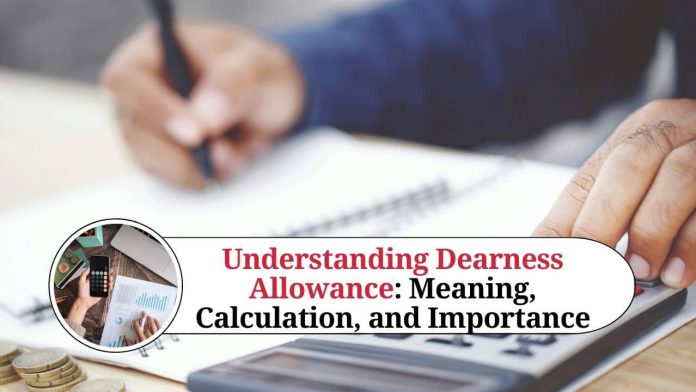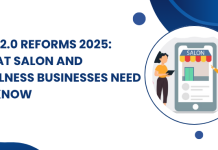Dearness Allowance (DA) is an important component of the salary of employees in India. It is a type of allowance that is provided by the employer to employees to counteract the impact of inflation on their salaries. In this blog, we will explain the meaning, calculation, and importance of Dearness Allowance.
What is Dearness Allowance (DA)?
Dearness Allowance is a cost of living adjustment allowance that is given to employees in India to adjust their salaries according to the inflation rate. The allowance is given to employees to maintain their purchasing power parity. The DA is calculated as a percentage of the basic salary of an employee and is adjusted twice a year, usually in January and July.
How is Dearness Allowance (DA) calculated?
The calculation of Dearness Allowance is based on the All India Consumer Price Index (AICPI) prepared and released by the Government of India. The AICPI is a measure of the change in the price of a basket of goods and services consumed by households. The calculation of DA is done by multiplying the percentage increase in the AICPI by a factor called the conversion factor.
The conversion factor is determined based on the recommendation of the 7th Central Pay Commission. As of now, the conversion factor stands at 2.57. So, the formula for calculating the Dearness Allowance is:
DA = ( (Average of AICPI for the past 12 months – 261.42) * 100) / 261.42 * 2.57
The value of the conversion factor may change in the future depending on the recommendations of the pay commission.
Importance of Dearness Allowance (DA)
The Dearness Allowance is an important component of an employee’s salary, especially for those who fall under the category of non-executives, workmen, or industrial employees. The allowance is given to employees to maintain their purchasing power parity and to adjust their salaries with the increase in the cost of living.
The DA helps in improving the standard of living of employees and also boosts their morale. It is also an important factor that is considered by employees while accepting a job offer or deciding to continue working in an organization.
Types of Dearness Allowance
There are two types of Dearness Allowance: Industrial Dearness Allowance (IDA) and Variable Dearness Allowance (VDA). Industrial Dearness Allowance is given to employees in the industrial sector, while Variable Dearness Allowance is given to employees in the agricultural sector.
The calculation of IDA and VDA is based on different parameters, and they are adjusted at different intervals. IDA is adjusted every quarter, while VDA is adjusted every six months.
Impact of Dearness Allowance on the Economy
Dearness Allowance has a significant impact on the Indian economy. The allowance increases the disposable income of employees, which in turn boosts consumer spending. The increase in consumer spending leads to an increase in demand for goods and services, which creates employment opportunities and promotes economic growth.
On the other hand, the increase in DA also leads to an increase in the cost of production, which can lead to inflation. The government has to strike a balance between providing adequate DA to employees and controlling inflation.
Recent Changes in Dearness Allowance
In 2020, due to the COVID-19 pandemic, the government of India had put a hold on the increase in DA and Dearness Relief (DR) for central government employees and pensioners respectively, from January 2020 to June 2021. However, the government announced in July 2021 that the DA and DR would be restored with effect from July 1, 2021. The government also announced an increase of 11% in DA for central government employees and pensioners.
In addition, the government also announced that the DA and DR would be increased by 3% with effect from January 1, 2022. This increase would take the total DA to 28%, which is the highest in the last 16 years.
Impact of Dearness Allowance on Employees
Dearness Allowance is a crucial component of an employee’s salary, and any changes in the DA have a significant impact on the employees. The increase in DA leads to an increase in the take-home salary of employees, which helps in improving their standard of living.
On the other hand, any delay or reduction in the DA leads to dissatisfaction among employees, which can result in industrial unrest. Therefore, the government has to ensure that the DA is provided to employees on time and is in line with the inflation rate.
Conclusion
Dearness Allowance is an important component of the salary of employees in India. The allowance is given to employees to counteract the impact of inflation on their salaries and to maintain their purchasing power parity. The calculation of DA is based on the All India Consumer Price Index (AICPI), and it is adjusted twice a year. DA has a significant impact on the Indian economy as it increases the disposable income of employees and promotes economic growth. However, the government has to strike a balance between providing adequate DA to employees and controlling inflation.
Read more useful content:
Frequently Asked Questions (FAQ’s)
Q1.) Are all government employees entitled to Dearness Allowance?
Yes, all government employees, including central government employees, state government employees, and employees of public sector units, are entitled to Dearness Allowance.
Q2.) Who is eligible for Dearness Allowance?
Employees who work in the government sector, public sector units, and organized sector are eligible for Dearness Allowance.
Q3.) Is the rate of Dearness Allowance the same for all employees?
No, the rate of Dearness Allowance varies depending on the type of employee and the sector they work in. For example, the rate of Dearness Allowance for central government employees is different from that of state government employees.
Q4.) Can the rate of Dearness Allowance change during the year?
No, the rate of Dearness Allowance is adjusted twice a year, in January and July. The rate remains constant until the next adjustment.
Q5.) Are pensioners eligible for Dearness Allowance?
Yes, pensioners are eligible for Dearness Allowance. The allowance is known as Dearness Relief (DR), and it is paid to pensioners to maintain their purchasing power parity.
Q6.) Is Dearness Allowance paid to employees in the private sector?
No, Dearness Allowance is not paid to employees in the private sector. It is only paid to employees in the government sector, public sector units, and organized sector.
Q7.) What is the current rate of Dearness Allowance in India?
As of January 2022, the rate of Dearness Allowance in India is 28%.
Q8.) How does Dearness Allowance impact the economy?
Dearness Allowance impacts the economy by increasing the disposable income of employees, which in turn boosts consumer spending, leading to an increase in demand for goods and services, creating employment opportunities, and promoting economic growth.
Q9.) What happens if there is a delay in the payment of Dearness Allowance?
A delay in the payment of Dearness Allowance can lead to dissatisfaction among employees and result in industrial unrest.
Q10.) Can Dearness Allowance be claimed as a tax deduction?
No, Dearness Allowance cannot be claimed as a tax deduction, as it is considered a part of the employee’s salary. However, any tax exemptions or deductions that are applicable to the salary can be applied to the Dearness Allowance.




















